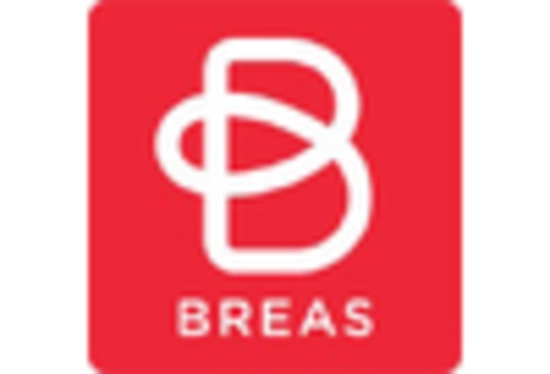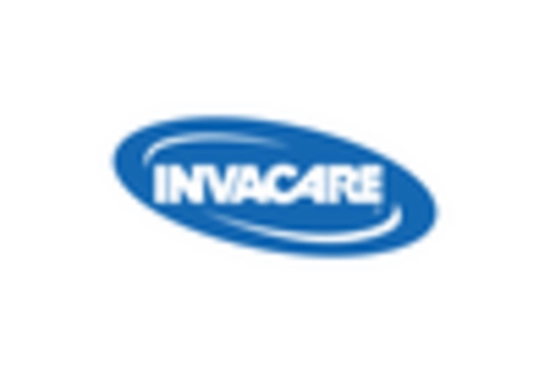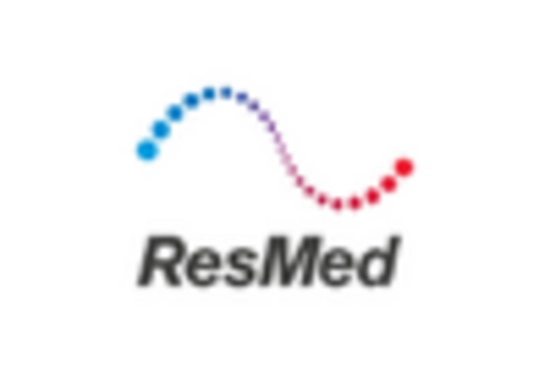Rising Awareness of Home Healthcare Solutions
The growing awareness and acceptance of home healthcare solutions are propelling the Oxygen Conservation Device Market forward. Patients increasingly prefer receiving care in the comfort of their homes, leading to a surge in demand for home-based oxygen therapy devices. This trend is supported by the increasing number of healthcare policies promoting home healthcare as a cost-effective alternative to hospital stays. Market data suggests that the home healthcare segment is expected to grow significantly, with oxygen conservation devices playing a crucial role in this transformation. As patients seek more convenient and accessible treatment options, the Oxygen Conservation Device Market is likely to experience robust growth, driven by the need for effective home-based oxygen therapy solutions.
Increasing Prevalence of Respiratory Disorders
The rising incidence of respiratory disorders, such as chronic obstructive pulmonary disease (COPD) and asthma, is a primary driver for the Oxygen Conservation Device Market. According to recent health statistics, millions of individuals are diagnosed with these conditions annually, necessitating effective oxygen therapy solutions. As the population ages, the demand for oxygen conservation devices is expected to surge, with projections indicating a potential market growth rate of over 8% in the coming years. This trend underscores the critical need for innovative devices that enhance patient comfort and optimize oxygen usage, thereby improving overall health outcomes. The Oxygen Conservation Device Market is likely to benefit from this increasing demand, as healthcare providers seek to offer more efficient and effective treatment options for patients suffering from respiratory ailments.
Growing Demand for Eco-Friendly Medical Devices
The increasing emphasis on sustainability and eco-friendly practices is shaping the Oxygen Conservation Device Market. As healthcare providers and patients alike become more environmentally conscious, there is a rising demand for oxygen conservation devices that minimize waste and reduce carbon footprints. Manufacturers are responding to this trend by developing devices that utilize sustainable materials and energy-efficient technologies. Market trends indicate that eco-friendly medical devices are gaining traction, with consumers actively seeking products that align with their values. This shift towards sustainability is likely to drive innovation within the Oxygen Conservation Device Market, as companies strive to meet the evolving expectations of environmentally aware consumers.
Technological Innovations in Oxygen Delivery Systems
Technological advancements in oxygen delivery systems are significantly influencing the Oxygen Conservation Device Market. Innovations such as portable oxygen concentrators and smart oxygen delivery systems are enhancing the efficiency and usability of oxygen therapy. These devices are designed to conserve oxygen while providing patients with the necessary therapeutic levels, thus improving their quality of life. The market is witnessing a shift towards more compact and user-friendly devices, which are expected to capture a larger share of the market. Furthermore, the integration of digital health technologies, such as remote monitoring and data analytics, is likely to drive further growth in this sector. As a result, the Oxygen Conservation Device Market is poised for expansion, driven by the demand for advanced, efficient, and patient-centric oxygen delivery solutions.
Supportive Government Policies and Reimbursement Frameworks
Supportive government policies and reimbursement frameworks are essential drivers for the Oxygen Conservation Device Market. Many countries are implementing policies that encourage the use of oxygen therapy devices, recognizing their importance in managing chronic respiratory conditions. Additionally, favorable reimbursement policies are making these devices more accessible to patients, thereby increasing their adoption rates. Market analysis indicates that regions with strong healthcare support systems are witnessing higher growth in the oxygen conservation device sector. As governments continue to prioritize respiratory health, the Oxygen Conservation Device Market is expected to thrive, benefiting from increased funding and support for innovative oxygen therapy solutions.

















Leave a Comment